17 Tweets That Feel as Cozy as Sitting by the Fireplace

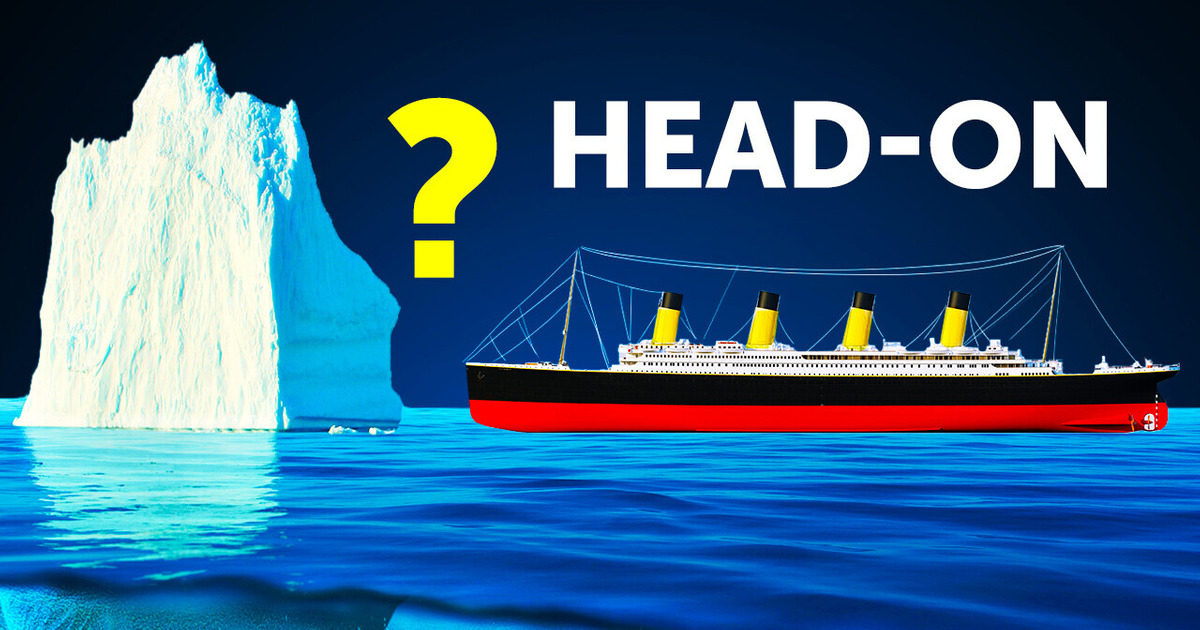
On April 10, 1912, crowds gathered at Southampton beach to wave off what was at the time the world’s largest and most prestigious ship, the RMS Titanic. The cost of the most expensive First Class Parlor ticket was $4,350 — that’s around $70,000 in today’s money.
But barely 5 days after steaming away, the ship was swallowed by the Atlantic Ocean. So let’s rewind and go back to what actually happened on that fateful night. The captain wanted to set a speed record for the ship’s maiden voyage and arrive early.

The ship was deemed unsinkable, so he went full throttle into the dark arctic waters. After spotting the [100 ft (30 m)] iceberg, the crew desperately tried to steer the vessel away and avoid the collision, but the Titanic was travelling too fast, and the iceberg tore down the side of the ship, creating a huge opening in the hull.
It wasn’t a continuous rip and damage was caused in several places. In total, the damage spanned along an area of around [300 ft (90 m)]. But the ship’s designers had prepared for the prospect of a collision and added watertight compartments down each side of the ship to act as a buffer zone.
Four of these compartments could be breached, and the ship would still stay afloat, but because the iceberg tore down the side of the Titanic, it ripped holes in six compartments. The compartments didn’t extend up the total height of all decks, and weren’t actually sealed at the top. This is why when more than four were flooded, water reached over the top of the bulkheads and filled the remaining compartments causing the ship to sink into the ocean. Think of it as water spilling over in an ice cube tray.
But what if the collision was head-on, would it still have sunk? Ships are designed with potential crashes in mind, and most vessels have collision bulkheads in the bow. Most of all, it’s like your car’s bumper or crumble zone: it’s a safety feature that can withstand a direct hit.
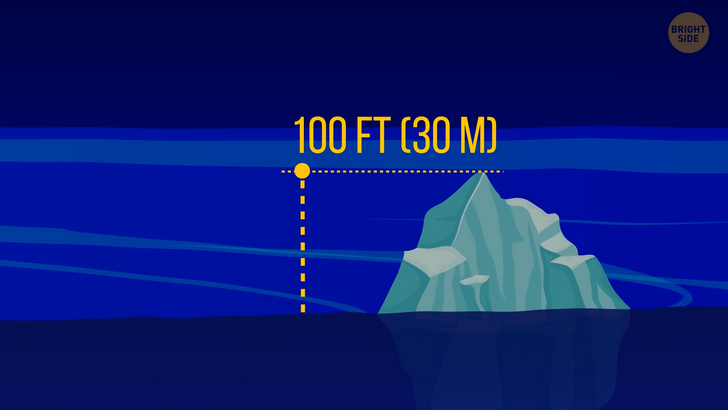
The bow could have taken some of the impact, and some experts have suggested that if it hit head-on, only 2 to 4 of the watertight compartments would have been flooded. So in theory, the Titanic might not have sunk, and it might have even been able to continue sailing to its final destination at a much slower speed.
The force of impact would likely have been huge, though. But although passengers would have been injured by the force, they’d have been able to stay on the ship to wait to be rescued by other ships rather than being forced into the icy waters of the Atlantic.
Still, one of the Titanic’s designers, Edward Wilding, suggested that the force of the impact might not have actually been that big. He told the British inquiry that “lots of people scarcely felt” the collision, and he believed the ship would not have sunk if it did hit the iceberg head-on.
The ship was also designed with remotely operated watertight doors between all compartments, so any floods could have been quickly sorted out. Because the Titanic had 6 breaches from the side collision and because it happened so quickly, sealing the doors wouldn’t have made a difference as it was essentially impossible to save it by that point.
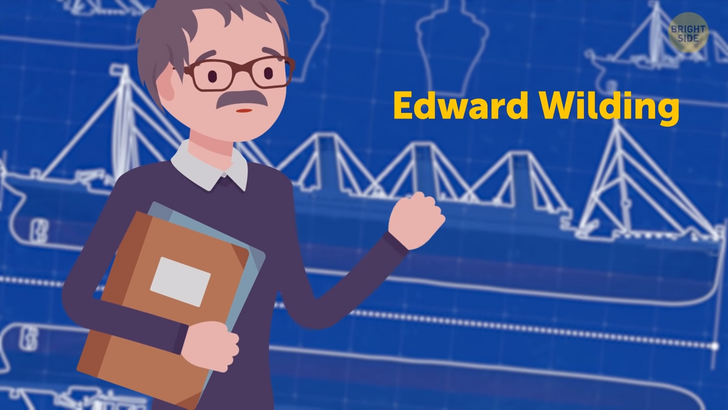
The ship immediately began to flood, with water pouring in at a rate of roughly 7 tons per second, fifteen times faster than it could be pumped out. So while it sounds like the Titanic would have survived had the ship hit the iceberg head-on, this idea does come with some issues.
First off, the collision bulkheads were designed to survive a crash with another ship, not a giant iceberg! If two ships collided, both would absorb some of the impact in their bulkheads, sharing the impact and likely staying afloat. But an iceberg is stationary, meaning that Titanic would absorb most of the energy from the collision.
If Titanic hit head first, because of the speed it was travelling the impact would have likely traveled down the whole body of the ship. Just imagine a 46,000-ton ship traveling at around [20 knots (37 kph)]. At some point, it hits an iceberg that weighs what could be over 100,000 tons. This collision would likely create a powerful force causing massive damage to the vessel.
It is likely that seams would split, staircases would come tumbling down, and rivets would burst open across the ship. All that would’ve potentially flooded even more compartments. This could have caused the Titanic to sink in a matter of minutes, rather than hours.
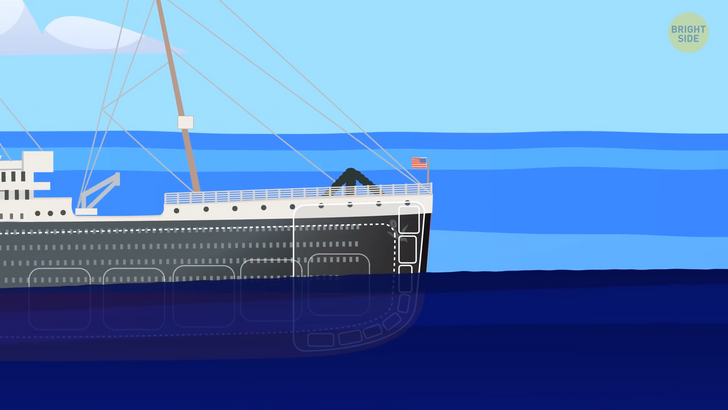
But that’s just the tip of the iceberg — as we all know, the biggest part of it is hidden underwater. So if Titanic had been traveling head-on, it’s likely that it would’ve hit the part of the iceberg below the water first, which would send it veering off course. Hitting an iceberg is not like hitting a brick wall. In this case, the ice under the water would have torn open the bottom of the ship and caused damage to the sides.
Icebergs also aren’t flat solid objects. If a flat collision happened, the ship might have stayed afloat, but icebergs come in many shapes and sizes — from domes to wedges. Studies have also been done on the steel used to produce the Titanic, and the tests show the metal was about 10 times more brittle than the steel we use today.
The ship was built before we understood the effects of low temperature on steel. The old steel used to make the vessel would not bend when faced with freezing temperatures, but break. Recovered pieces of Titanic’s hull plates show that the hull just shattered on impact.
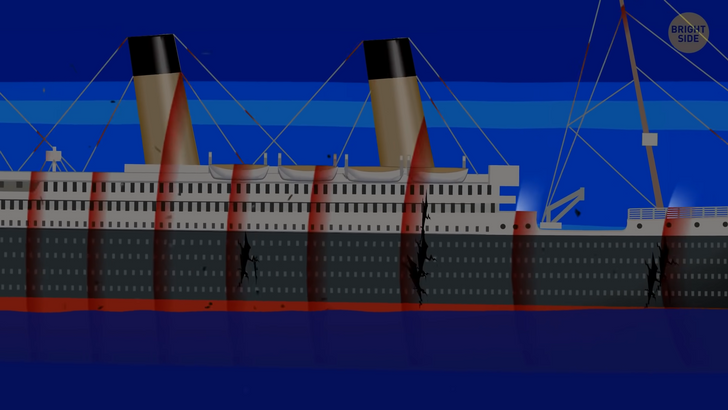
Hitting head-on would also cause a very severe and abrupt stop, so even if the ship hadn’t sunk, there would still have been major issues. Think about when you suddenly hit the brakes on your car or when the bus stops while you’re walking down the aisle, and you get flung forward.
Passengers would have been thrown across the ship and because the crash happened at night, most people were sleeping so wouldn’t be able to effectively prepare for any sort of impact. This would result in injuries for most people on board. It would be especially bad for those at the front of the ship, where the accommodation for the off-duty firefighters, greasers and engineers was.
But while passengers and off-duty crew may have been thrown out of bed, there would be a lot more survivors than in the original scenario. Many ships have had head-on collisions and made it back to shore.
Not many people know that Titanic actually had 2 sister ships. The White Star Line, the company that built Titanic, also built vessels called Britannic and Olympic. Captained by Edward J. Smith, who would later helm Titanic, the Olympic set off on its maiden voyage in June 1911. But much like for its sister ship, disaster was just around the corner. On its fifth commercial voyage, Olympic collided with a Royal Navy ship HMS Hawke.

While the Olympic received damage to its side, Hawke crashed into the other vessel head-on. The bow of Hawke was completely crushed by the collision, but because the ship had watertight compartments, it managed to survive the impact and safely returned to shore for repair.
Another case study is the SS Andrea Doria, which was an Italian ocean liner that made global headlines in 1956. Like the Titanic, the Andrea Doria was heading for New York City on its 101st voyage when disaster struck.
On July 25, the vessel collided with a 524 ft (160 m) Swedish passenger liner, Stockholm. The Stockholm hit the ship head-on, but the point of impact for the Andrea Doria was on its side. The front of the Stockholm was completely smashed, but because the impact was on its hull, it managed to survive.
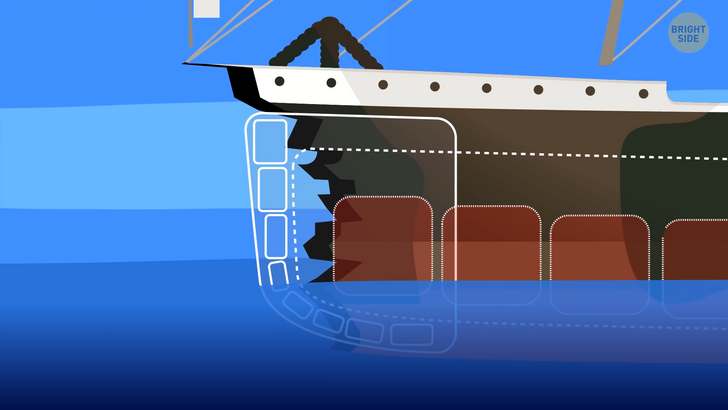
The Andrea Doria however sadly sank due to the collision being on the side of the ship. So these cases could suggest that maybe the Titanic would have survived had it hit the iceberg head-on.
But we have to remember that the Titanic hit the thing at full speed, whereas both the Olympic and the Andrea Doria were travelling slower.











